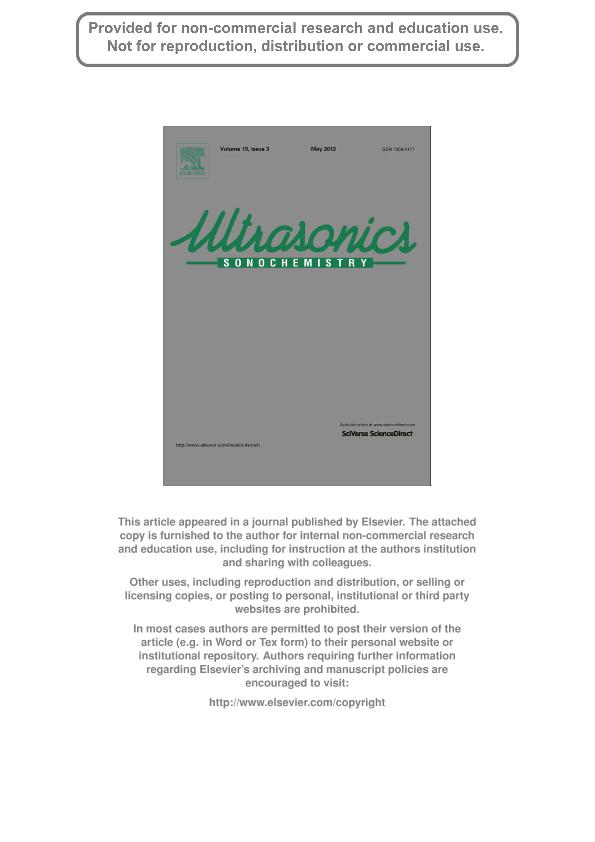Artículo
Low-frequency ultrasound induces oxygen vacancies formation and visible light absorption in TiO 2 P-25 nanoparticles
Osorio Vargas, Paula; Pulgarin, Cesar; Sienkiewicz, Andrzej; Pizzio, Luis Rene ; Blanco, Mirta Noemi
; Blanco, Mirta Noemi ; Torres Palma, Ricardo Antonio; Pétrier, Christian; Rengifo Herrera, Julian Andres
; Torres Palma, Ricardo Antonio; Pétrier, Christian; Rengifo Herrera, Julian Andres
 ; Blanco, Mirta Noemi
; Blanco, Mirta Noemi ; Torres Palma, Ricardo Antonio; Pétrier, Christian; Rengifo Herrera, Julian Andres
; Torres Palma, Ricardo Antonio; Pétrier, Christian; Rengifo Herrera, Julian Andres
Fecha de publicación:
05/2012
Editorial:
Elsevier
Revista:
Ultrasonics Sonochemistry
ISSN:
1350-4177
Idioma:
Inglés
Tipo de recurso:
Artículo publicado
Clasificación temática:
Resumen
Low-frequency ultrasound (LFUS) irradiation induces morphological, optical and surface changes in the commercial nano-TiO 2-based photocatalyst, Evonik-Degussa P-25. Low-temperature electron spin resonance (ESR) measurements performed on this material provided the first experimental evidence for the formation of oxygen vacancies (V o), which were also found responsible for the visible-light absorption. The V o surface defects might result from high-speed inter-particle collisions and shock waves generated by LFUS sonication impacting the TiO 2 particles. This is in contrast to a number of well-established technologies, where the formation of oxygen vacancies on the TiO 2 surface often requires harsh technological conditions and complicated procedures, such as annealing at high temperatures, radio-frequency-induced plasma or ion sputtering. Thus, this study reports for the first time the preparation of visible-light responsive TiO 2-based photocatalysts by using a simple LFUS-based approach to induce oxygen vacancies at the nano-TiO 2 surface. These findings might open new avenues for synthesis of novel nano-TiO 2-based photocatalysts capable of destroying water or airborne pollutants and microorganisms under visible light illumination.
Archivos asociados
Licencia
Identificadores
Colecciones
Articulos(CINDECA)
Articulos de CENTRO DE INV EN CS.APLICADAS "DR.JORGE J.RONCO"
Articulos de CENTRO DE INV EN CS.APLICADAS "DR.JORGE J.RONCO"
Citación
Osorio Vargas, Paula; Pulgarin, Cesar; Sienkiewicz, Andrzej; Pizzio, Luis Rene; Blanco, Mirta Noemi; et al.; Low-frequency ultrasound induces oxygen vacancies formation and visible light absorption in TiO 2 P-25 nanoparticles; Elsevier; Ultrasonics Sonochemistry; 19; 3; 5-2012; 383-386
Compartir
Altmétricas



